Woolworth Building Tour & Reception: From Cathedral of Commerce to Catalyst for Culture
Join us for a special evening celebrating an exciting new chapter in one of New York City’s most legendary landmarks!


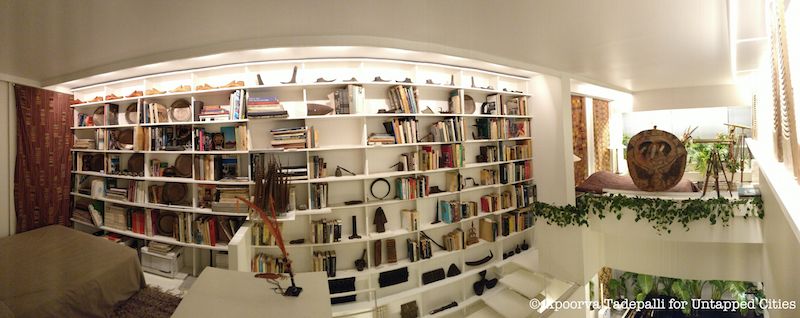
“Architecture is one of the few subjects I cannot detach myself from emotionally,” Harold Ross, New Yorker editor, wrote in 1936 to an offended reader who had sent an angry letter to the magazine objecting to Lewis Mumford’s harsh architecture criticism. Ross defended Mumford’s work because unlike other kinds of art, Ross said, architecture is something we’re audience to without choice. We can’t really choose not to see bad architecture, or walk away from bad architecture, the way we can with bad art, music, or dance performances. In this sense, the stakes of architecture are particularly high, and Mumford knew this.
Paul Rudolph, arguably one of the most prominent archiects of the mid-twentieth century, understood these stakes, too. His work was largely a reaction against purist functionalism; his attention to design, ornament, and detail went beyond just utility. He was passionate about color and materiality, which he felt architecture had lost; he would collect art and miscellaneous objects, often multiple pieces of the same thing, or in different shapes, to display in his interiors.
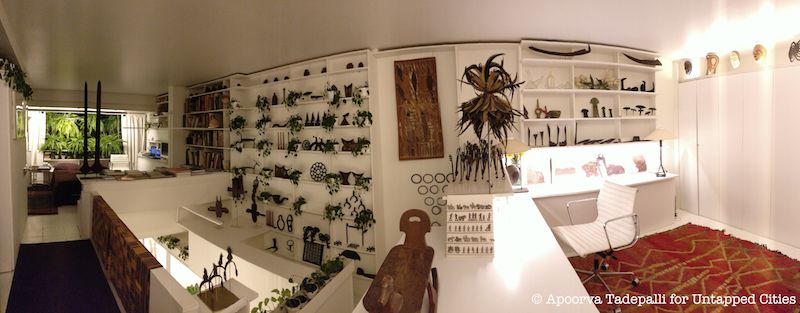
When he started building the Yale Art and Architecture building, he came across pieces of old Greek temples and scupltures that had been collected by the school and stored away. He took them out and hung them in different places in the new, modern, concrete building. “It was strange at the time,” Kelvin Dickinson, President of the Paul Rudolph Heritage Foundation, said in an interview. “But it showed that you can appreciate an object because it’s beautiful, not necessarily just for what it does.”
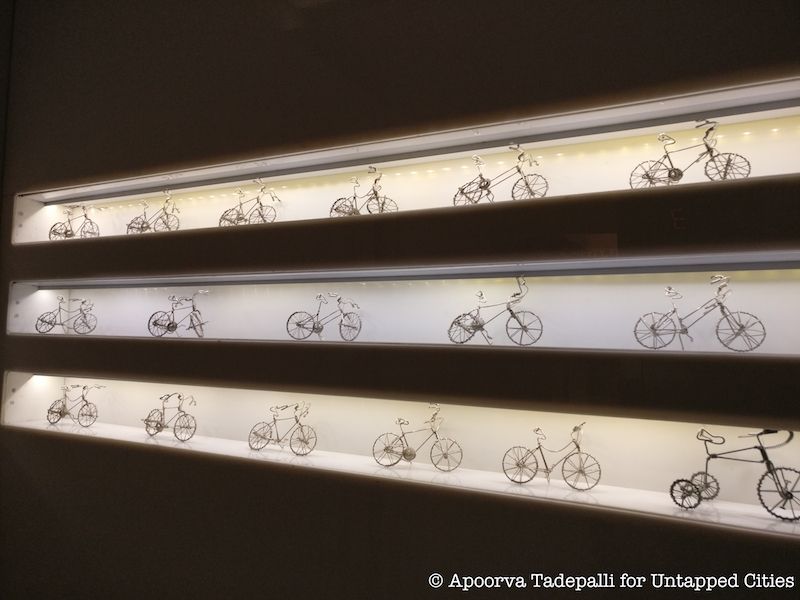
Inside the elevator of the Modulightor Building
Modulightor, a light fixtures firm and design lab founded and designed by Rudolph on the Upper East Side, represents this idea, and is filled with exactly such quirky, ornamental displays—pieces of telescopes, bicycle parts, iron rods and knick knacks. Conceptualized by Rudolph, Modulightor is something of a cross between a design and production store and a museum.
Dissatisfied with the lighting industry, which they felt didn’t offer good enough products for architects, Rudolph and his decades-long friend, Ernst Wagner, founded the space where they could make their own. Custom light fixtures are made there by hand, and also displayed, as part of the Paul Rudolph Heritage Foundation’s aim of keeping Rudolph’s work and ideas alive. From accent lights and art lights to various forms of the chandelier, Modulightor is the manifestation of Rudolph’s obsession with light as a fourth dimension.
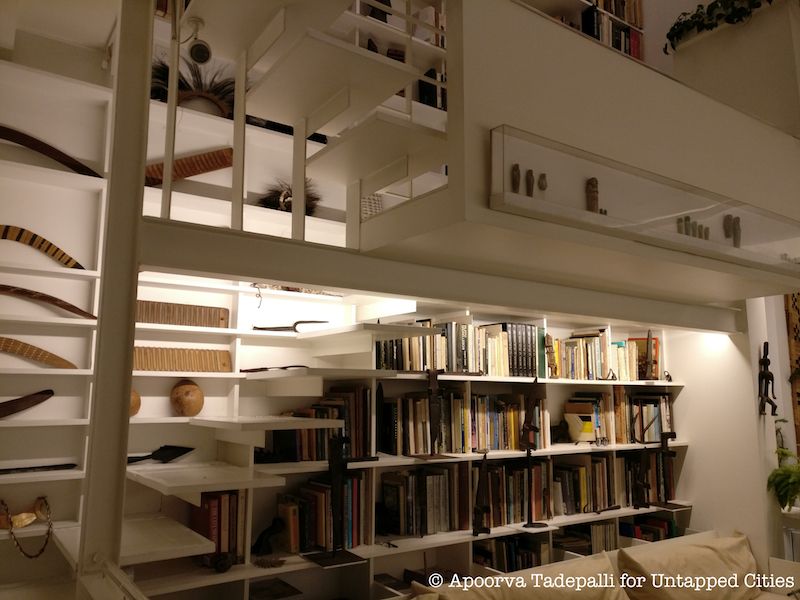
It was heavily influenced by Le Corbusier’s Le Modulor, a scale of proportions proposed for architectural harmony. In the way light fixtures as well as decorative objects are displayed in the space, the purely sculptural aspects of an object can be seen, as was Rudolph’s vision: the spaces between objects and the way they were arranged were often as important to his idea of what they did to an interior, as the objects themselves.
Ernst Wagner, Rudolph’s devoted friend, now lives in the upper floors of the building, and he regularly makes his home as open to the public as Ross argued almost a century ago was the natural state of all architecture. “It’s hard to talk about architecture from a picture in a book, or from reading about it,” Mr. Dickinson said, “As opposed to walking around it.”
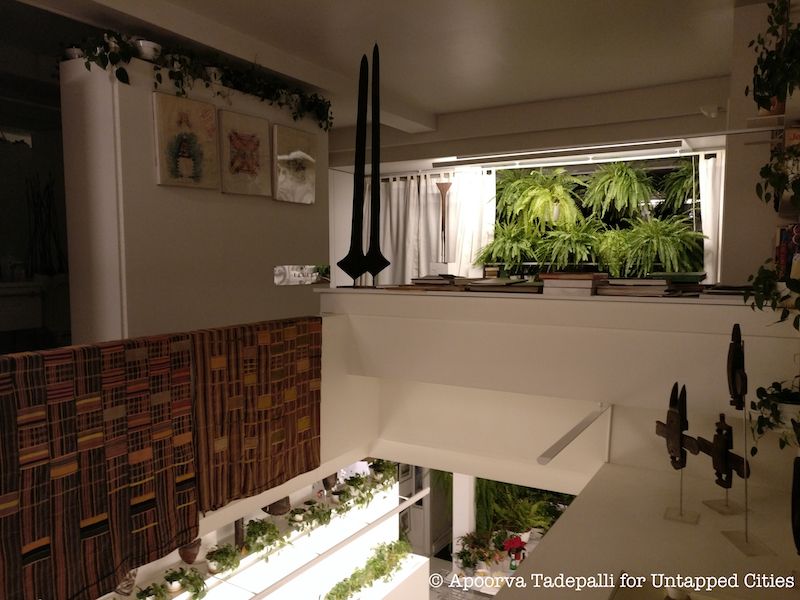
So to prevent Rudolph’s buildings, and his vision, from being forgotten, Mr. Wagner and his loyal foundation open his home, where you can see Rudolph’s ideas at work, to the public, who walk through a foyer filled with greenery under soft yellow light and floor-to-ceiling bookshelves, through a sitting room adorned with Rudolph’s collected objects and his lego-part-style furniture, onto a terrace and up a tight set of steps into the study and open bedrooms which rest like balconies overlooking the foyer.
The first Friday of every month sees an open house, where Mr. Wagner sits on a surprisingly comfortable ice-white chair of plastic sheets and metal rods, speaking to strangers about Rudolph’s work and design theory, about how intimate his lighting design made a space feel. He also explains the intricacies of Rudolph’s other buildings, which Mr. Wagner has also lived in. Mr. Wagner said he feels close to Rudolph when he sees the many young architects passing through his home, experiencing a real Rudolph design that certainly, with its layers and spatial complexity, can’t be understood through photographs.
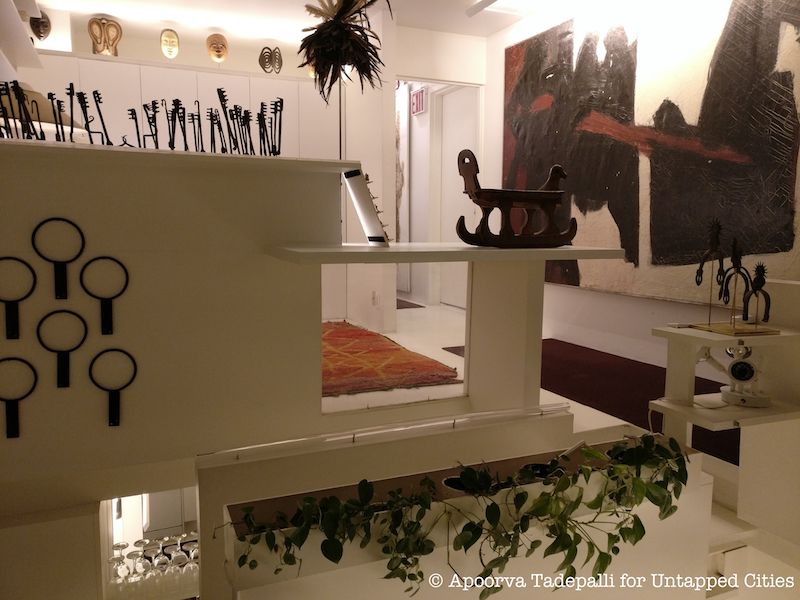
They’re interested in how light makes you feel; it plays around inside the room, where there are abundant nooks and balconies, and everything is a potential shelf. Rudolph was the son of a minister, spending his childhood in chapels daydreaming while his father delivered sermons. He believed a room needed to provide elements that enabled the mind to wander.
Rudolph once held informal meetings and lectures in this space to discuss ideas with young architects, and Mr. Wagner is thinking of continuing this tradition. He says that whoever new comes to do these sessions should be lively, and passionate about architecture, and conscious of its psychological impact. Then he goes on to talk about Rudolph’s architecture with liveliness and passion, making a case for its psychological impact. “Architecture has emotional repercussions,” Mr. Wagner said.
Next, Step Inside the Studio Apartment of Le Corbusier in Paris.
Subscribe to our newsletter